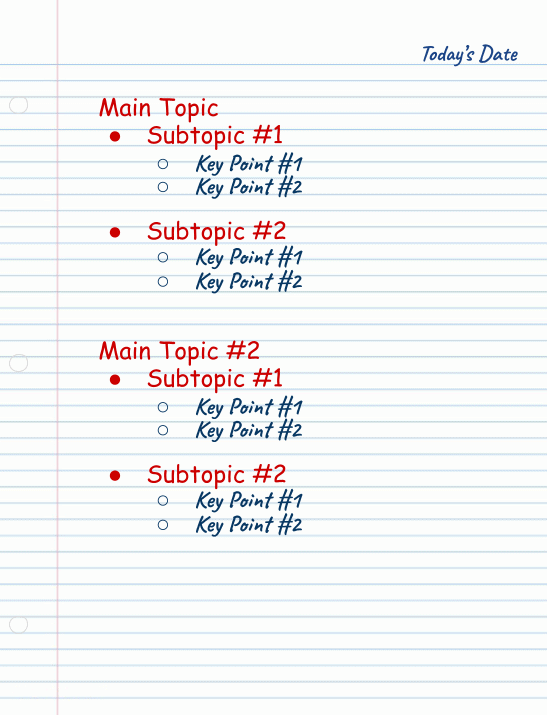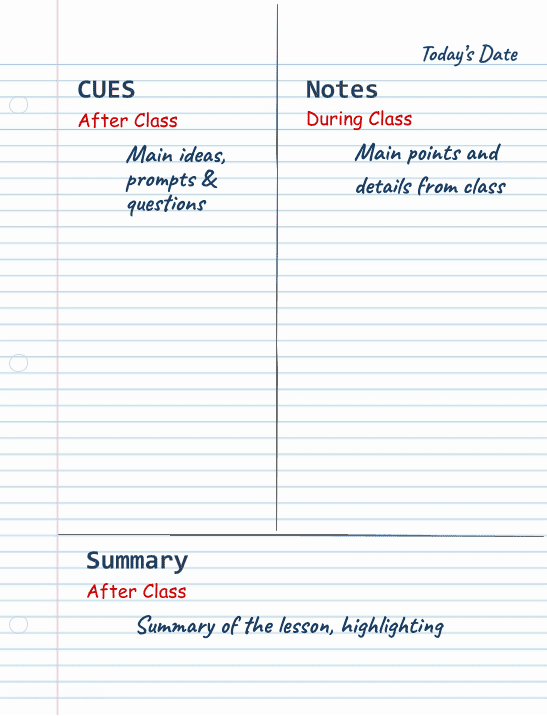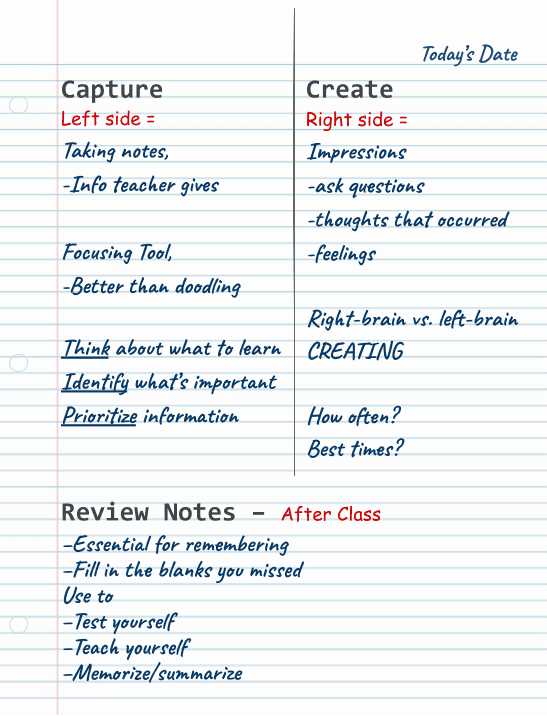Taking the Mystery Out of Note-Taking
Author: Rich Atkinson
You Can Help Your Students
Teachers, you can help your students by taking the mystery out of how to take notes.
As you build a case for your lesson for the day, consider giving your students clear steps to understand your main points. How might your students examine the topic and ask questions to come to their own conclusions? By knowing how to take good notes, your students will naturally have better grades. So consider some of the methods of working (modus operandi) to achieve that goal.

1. Help Your Students Process the Scene of Note-Taking
In a mystery, detectives gather evidence by processing a scene and looking for clues. In the same way, you can help your students explore how they gather information and process the scene of your lesson by knowing how to take good notes. Three main note-taking techniques are the outline method, the Cornell method, and the Capture/Create method.
The outline method is one of the most common. It is like this blog post with a point-by-point outline with numbers and sometimes subpoints such as a, b, and c for each point, paragraph, or topic. This method has limitations. The outline method may capture basic information, but you want much more for your students.
In the Cornell Method, students are challenged to take notes in a way that helps them in class and when they are studying or analyzing the information. Students start by drawing a horizontal line about three inches from the bottom of their page and write a footer that says Summary. In the top section of the page, draw a vertical line one-third of the way across and down the page. In this section, write After Class for the header. They will write questions or important points in this section. Write lecture notes in the two-thirds section on the right side of the page. In the header of this section, they will write the class lecture topic.
Personally, I prefer Jim Kwik’s Capture/Create method of note-taking. It uses the left and right brain for note-taking and information gathering. At the same time, it is designed to help learners process that information, too. Also, it is much quicker to get the note-taking page set up.
For the Capture/Create method, students should draw a vertical line down the middle of the page. On the top of the left side of the page, write Capture. This is where you place lecture notes. On the right header, write Create for recording thoughts and questions. As Jim Kwik explains in his How I Take Notes video, the left column is for the (head) logical aspects of taking notes. The right column is for the (heart) imagination and any impressions of what students captured.
If your students merge the two sides together, they can put their knowledge into action. Kwik suggests asking questions such as:
- How can I use this?
- Why must I use this?
- When will I use this?
- How does this relate to something else I have learned?
- Who do I want to teach this to? (When we teach others, we master a topic. Kwik calls this the explanation effect.)
2. Teachers Help Your Students Look for Clues for Determining What’s Important
Besides knowing how to gather information for the note-taking process structure, how to look for and gather the important information in your notes is vitally important, too. So teach your students to look for these clues, indicators, or signal words found in the premise and conclusions. In the same way a prosecuting attorney or a detective builds a case with reasoning, evidence, and conclusions, a teacher builds a case for their lecture topic.
Premise indicators are clues to what reasons and evidence a teacher is using to explain their topic. On the other hand, a conclusion indicator is a statement that supports the premise and a certain belief or viewpoint. Because of the reasons and evidence, we have reached this conclusion: the suspect is guilty.
Premise word clues include: since, because, and seeing that. Conclusion word clues include: therefore, in conclusion, and consequently. Also, look for repeated words or phrases.
As we wrap up this mystery about note-taking, remember the way your students gather and process your notes is important. They may choose the outline method, the Cornell method, or the Capture and Create method — or perhaps a hybrid of all three.
Teachers, help them see the clues of your argument through your repeated words, emphases, and premise and conclusion indicators.
Also, students may choose colored pens and highlighters to make the important points and clues memorable for review and test time.
About the Author

Rich Atkinson began his writing career with a community paper in Ohio.
He has worked for a magazine. Travel assignments have taken him outside the country to Haiti and Guatemala. In the U.S., he has journeyed to Atlanta, Boston, Milwaukee, and many other places for feature stories.
When not writing, Rich finds time to read and enjoys listening to authors discuss writing on podcasts and in YouTube videos.




